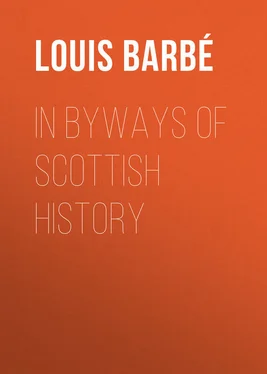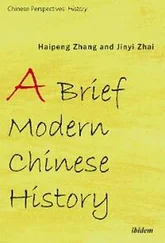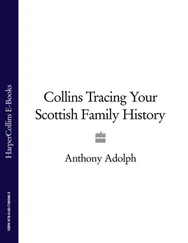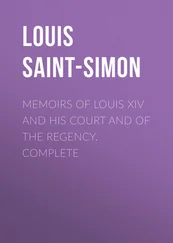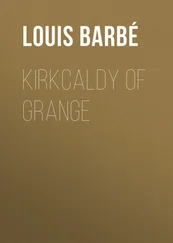Louis Barbé - In Byways of Scottish History
Здесь есть возможность читать онлайн «Louis Barbé - In Byways of Scottish History» — ознакомительный отрывок электронной книги совершенно бесплатно, а после прочтения отрывка купить полную версию. В некоторых случаях можно слушать аудио, скачать через торрент в формате fb2 и присутствует краткое содержание. Жанр: foreign_antique, foreign_prose, на английском языке. Описание произведения, (предисловие) а так же отзывы посетителей доступны на портале библиотеки ЛибКат.
- Название:In Byways of Scottish History
- Автор:
- Жанр:
- Год:неизвестен
- ISBN:нет данных
- Рейтинг книги:4 / 5. Голосов: 1
-
Избранное:Добавить в избранное
- Отзывы:
-
Ваша оценка:
- 80
- 1
- 2
- 3
- 4
- 5
In Byways of Scottish History: краткое содержание, описание и аннотация
Предлагаем к чтению аннотацию, описание, краткое содержание или предисловие (зависит от того, что написал сам автор книги «In Byways of Scottish History»). Если вы не нашли необходимую информацию о книге — напишите в комментариях, мы постараемся отыскать её.
In Byways of Scottish History — читать онлайн ознакомительный отрывок
Ниже представлен текст книги, разбитый по страницам. Система сохранения места последней прочитанной страницы, позволяет с удобством читать онлайн бесплатно книгу «In Byways of Scottish History», без необходимости каждый раз заново искать на чём Вы остановились. Поставьте закладку, и сможете в любой момент перейти на страницу, на которой закончили чтение.
Интервал:
Закладка:
To sketch Mary's character further would be trenching on debatable ground and overstepping the limits which we have imposed upon ourselves. There is one trait, however, which may be recorded on the authority even of her enemies – her personal courage. Randolph represents her as riding at the head of her troops "with a steel bonnet on her head, and a pistol at her saddle-bow; regretting that she was not a man to know what life it was to lie all night in the fields, or to walk upon the causeway with a jack and a knapscull, a Glasgow buckler, and a broadsword". The author of the poem preserved in the Record Office, to which we have already made reference, allows that "no enemy could appal her, no travail daunt her intent", that she "dreaded no danger of death", that "no stormy blasts could make her retire", and he likens her to Tomiris:
Tomiris hir selffe
Who dreaded ( awed ) great hosts with her tyrannye
Cold not showe hir selffe more valiant.
But never, surely, was her fortitude shown more clearly to the world than when, three hundred years ago, "she laid herself upon the block most quietly, trying her chin over it, stretching out her hands, and crying out: 'In manus tuas, Domine, commendo spiritum meum'".
THE FOUR MARYS
Reference is seldom made to the Queen's Marys, the four Maids of Honour whose romantic attachment to their royal mistress and namesake, the ill-fated Queen of Scots, has thrown such a halo of popularity and sympathy about their memory, without calling forth the well-known lines:
Yestreen the Queen had four Maries,
The night she'll hae but three;
There was Marie Seton, and Marie Beton,
And Marie Carmichael and me.
To those who are acquainted with the whole of the ballad, which records the sad fate of the guilty Mary Hamilton, it must have occurred that there is a striking incongruity between the traditional loyalty of the Queen's Marys and the alleged execution of one of their number, on the denunciation of the offended Queen herself, for the murder of an illegitimate child, the reputed offspring of a criminal intrigue with Darnley. Yet a closer investigation of the facts assumed in the ballad leads to a discovery more unexpected than even this. It establishes, beyond the possibility of a doubt, that, of the four family-names given in the stanza as those of the four Marys, two only are authentic. Mary Carmichael and Mary Hamilton herself are mere poetical myths. Not only does no mention of them occur in any of the lists still extant of the Queen's personal attendants, but there also exist documents of all kinds, from serious historical narrative and authoritative charter to gossiping correspondence and polished epigram, to prove that the colleagues of Mary Beton and Mary Seton were Mary Fleming and Mary Livingston. How the apocryphal names have found their way into the ballad, or how the ballad itself has come to be connected with the Maids of Honour, cannot be determined. There is, however, in Knox's History of the Reformation , a passage which has been looked upon as furnishing a possible foundation of truth to the whole fiction. It is that in which he records the commission and the punishment of a crime similar to that for which Mary Hamilton is represented as about to die on the gallows. "In the very time of the General Assembly there comes to public knowledge a haynous murther, committed in the Court; yea, not far from the queen's lap: for a French woman, that served in the queen's chamber, had played the whore with the queen's own apothecary. The woman conceived and bare a child, whom with common consent, the father and mother murthered; yet were the cries of a new-borne childe hearde, searche was made, the childe and the mother were both apprehended, and so was the man and the woman condemned to be hanged in the publicke street of Edinburgh. The punishment was suitable, because the crime was haynous." 50Between this historical fact – for the authenticity of which we have also the testimony of Randolph 51– and the ballad, which substitutes Darnley and one of the Maids of Honour for the queen's apothecary and a nameless waiting-woman, the connection is not very close. Indeed, there is but one point on which both accounts are in agreement, though that, it is true, is an important one. The unnatural mother whose crime, with its condign punishment, is mentioned by the historian, was, he says, a French woman. The Mary Hamilton of the ballad, in spite of a name which certainly does not point to a foreign origin, is also made to come from over the seas:
I charge ye all, ye mariners,
When ye sail ower the faem;
Let neither my father nor my mother get wit
But that I'm coming hame.
O, little did my mother ken,
The day she cradled me,
The lands I was to travel in,
Or the death I was to dee.
It does not, however, come within the scope of the present paper to examine more closely into the ballad of Mary Hamilton. It suffices to have made it clear that, whatever be their origin, the well-known verses have no historical worth or significance, and no real claim to the title of "The Queen's Marie" prefixed to them in the Minstrelsy of the Scottish Border . 52Except for the purpose of correcting the erroneous, but general belief, which has been propagated by the singular and altogether unwarranted mention of the "Four Marys", and the introduction of the names of two of them in the oft-quoted stanza, there would, in reality, be no necessity for any allusion to the popular poem in a sketch of the career of the fair Maids of Honour, whose touching fidelity through good and evil fortune has won for them a greater share of interest than is enjoyed by any of the subordinate characters in the great historical drama of which their royal mistress is the central figure.
The first historical and authoritative mention of the four Marys is from the pen of one who was personally and intimately acquainted with them – John Leslie, Bishop of Ross. It occurs in his description of the departure of the infant Mary Stuart from the small harbour at the foot of the beetling, castle-crowned rock of Dumbarton, on that memorable voyage which so nearly resembled a flight. "All things being reddy for the jornay," writes the chronicler, in his quaint northern idiom, "the Quene being as than betuix fyve and sax yearis of aige, wes delivered to the quene dowarier hir moder, and wes embarqued in the Kingis awin gallay, and with her the Lord Erskyn and Lord Levingstoun quha had bene hir keparis, and the Lady Fleming her fadir sister, with sindre gentilwemen and nobill mennis sonnes and dochteres, almoist of hir awin age; of the quhilkes thair wes four in speciall, of whom everie one of thame buir the samin name of Marie, being of four syndre honorable houses, to wyt, Fleming, Levingstoun, Seton and Betoun of Creich; quho remainit all foure with the Quene in France, during her residens thair, and returned agane in Scotland with her Majestie in the yeir of our Lord ImVclxi yeris." 53Of the education and early training of the four Marys, as companions and playmates of the youthful queen, we have no special record. The deficiency is one which our knowledge of the wild doings of the gayest court of the age makes it easy to supply. For the Scottish maidens, as for their mistress, intercourse with the frivolous company that gathered about Catherine de' Medici was but indifferent preparation for the serious business of life. Looking back on "those French years", doubtless they too, like her, "only seemed to see —
A light of swords and singing, only hear
Laughter of love and lovely stress of lutes,
And in between the passion of them borne
Sound of swords crossing ever, as of feet
Dancing, and life and death still equally
Blithe and bright-eyed from battle."
Интервал:
Закладка:
Похожие книги на «In Byways of Scottish History»
Представляем Вашему вниманию похожие книги на «In Byways of Scottish History» списком для выбора. Мы отобрали схожую по названию и смыслу литературу в надежде предоставить читателям больше вариантов отыскать новые, интересные, ещё непрочитанные произведения.
Обсуждение, отзывы о книге «In Byways of Scottish History» и просто собственные мнения читателей. Оставьте ваши комментарии, напишите, что Вы думаете о произведении, его смысле или главных героях. Укажите что конкретно понравилось, а что нет, и почему Вы так считаете.
